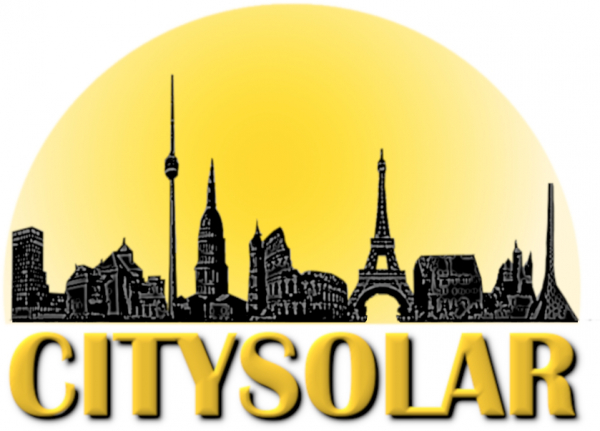Transparent solar cells for windows have been known for several years, but are still not sufficiently efficient in converting sunlight into electricity. Now the new consortium behind the EU project CITYSOLAR will change that to make energy-generating photovoltaic windows mainstream.
“We develop new innovative concepts within light management and solar module integration that are specifically targeted new promising organic and hybrid thin film PV technologies, and by that we go significantly beyond state-of-the-art in terms of efficiency for transparent photovoltaics. It’s a revolutionary new concept,” says Professor Aldo di Carlo, Cnr-Ism, who is coordinator of the new project and is thrilled about the support of CITYSOLAR from the H2020 framework”
Will take solar windows to a new level
CITYSOLAR will make multi-junction solar cells that are optimized to absorb different wavelengths of sunlight. The project will do this by combining recent development high band gap perovskite solar cells with low band gap, fullerene-free, organic solar cells.
The aim is to create unique semi-transparent solar cell that absorbs infrared and ultraviolet light, but not the visible light – making it possible to reach above 15% power conversion efficiency for semi-transparent solar cells. To achieve this CITYSOLAR brings together world-leading European academic and industry players, some with key intellectual property, together with two non-EU partners belonging to Mission Innovation countries specialized in the synthesis of advanced materials for hybrid and organic solar cells, to develop highly efficient and transparent solar cells and modules for Building Integrated PhotoVoltaics (BIPV).
The project runs for three years. The concept will be demonstrated at a module level on an area larger than 100 cm2. The consortium behind CITYSOLAR also includes industrial partners that can demonstrate integration of such technology towards commercial products.
Facts
The most recent Energy Performance of Buildings Directive of the European Commission requires all new buildings to be nearly zero-energy by the end of 2020 and strives to decarbonize the EU building stock by 2050.
The request for clean energy provided by renewable sources, and in particular photovoltaics (PV), is growing rapidly pushed by the urgent actions to counteract climate changes.
Photovoltaic energy production in cities is one of the most attractive concepts to increase the level of PV worldwide, as cities consume the energy produced instantaneously. As such, distribution or grid capacities are not limiting for building integrated PV.
Project partners:
1 Consiglio Nazionale delle Ricerche (Cnr) – Prof. Aldo Di Carlo, Research, IT
2 Friedrich-Alexander-Universität Erlangen-Nürnberg (FAU) – Prof. Christoph Brabec, University, DE
3 University of Southern Denmark (SDU) – Prof. Morten Madsen, University, DK
4 Università degli Studi di Roma « Tor Vergata » (UNITOV) – Dr. Fabio Matteocci, University, IT
5 Centre National de la Recherche Scientifique (CNRS) – Dr. Stefania Cacovich, Research, FR
6 H.GLASS (HG) – Dr. Fabrizio Giordano, SME, CH
7 Eni S.p.A. (Eni) – Dr. Paolo Biagini, Large Enterprise, IT
8 Brilliant Matters (BM) Organic Electronics Inc. (Brilliant Matters) - Dr. Philippe Berrouard, SME, CANADA
9 King Abdullah University of Science and Technology (KAUST) – Prof. Iain McCulloch University Saudi Arabia


 English (UK)
English (UK)  Italiano (Italia)
Italiano (Italia)